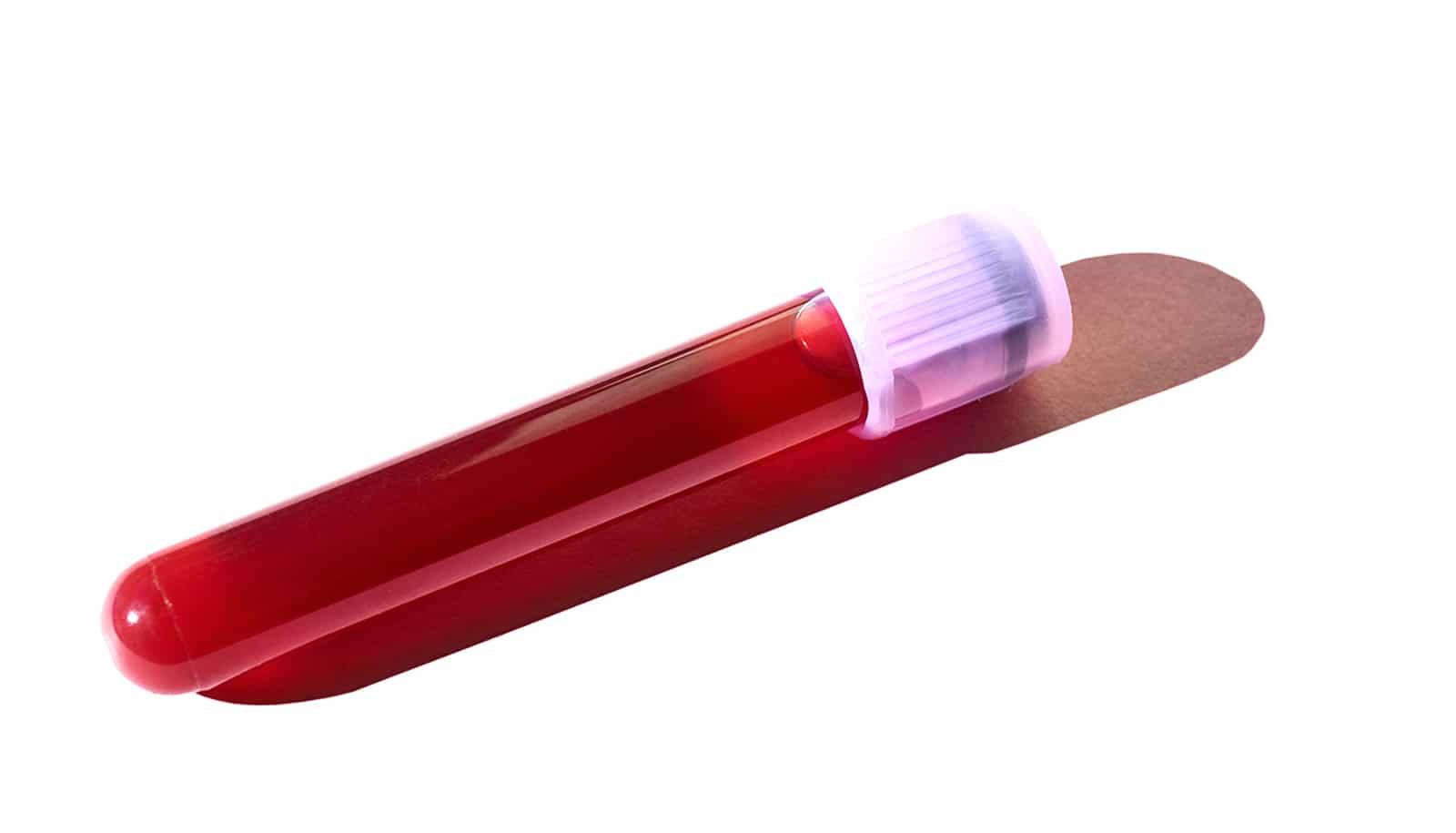Researchers have developed a highly sensitive blood test that can detect a key protein produced by cancer cells.
The test shows promise for early cancer detection, the researchers report.
Most cancers become deadly by keeping a low profile, causing no symptoms until they’re too advanced to treat. Ovarian and gastroesophageal cancers are among the most notorious for this sly disease progression, often leading to late-stage diagnoses.
Unlike many cancer tests that are limited in scope, expensive, or rely on invasive tissue sampling, the new method is a low-cost, multi-cancer detector that can pick up the presence of the telltale protein, known as LINE-1-ORF1p, in a tiny amount of blood in less than two hours.
“The assay has groundbreaking potential as an early diagnostic test for lethal cancers,” says Michael P. Rout, head of the Laboratory of Cellular and Structural Biology at Rockefeller University. “These kinds of ultrasensitive detection instruments are poised to improve patient outcomes in transformative ways.”
Detecting cancer biomarkers
Cancer biomarker detection is a young and growing field. There are a number of such biomarkers, but they can come with drawbacks. Some require surgical biopsies. Others are employed only after the emergence of symptoms, which can be too late for an effective intervention. Most are normal human proteins that have variability from person to person, making a single value hard to interpret. And many are targeted to a specific cancer, narrowing their range.
But recently, an important new biomarker for earlier detection may have emerged. That protein, known as LINE-1 ORF1p, came onto researchers’ radar about a decade ago. LINE-1 is a retrotransposon, a virus-like element present in every human cell that replicates through a copy-and-paste mechanism, resulting in a new copy in a new position in the genome. ORF1p is a protein it produces at high levels in cancer.
“Transposons are normally expressed in sperm and egg and during embryogenesis, so there are some circumstances where you have nonpathobiological expression of transposons,” says coauthor John LaCava, a research associate professor who specializes in LINE-1 research. “But otherwise, these ‘jumping genes’ are silenced within the genome, because their activity creates stress and insults in the cell.”
Most of the time, the body keeps LINE-1 in check.
“There are layers of mechanisms that prevent LINE-1 from being expressed and producing ORF1p, so we can use the presence of the protein as a proxy for an unhealthy cell that no longer has control over its transcriptome,” LaCava says. “You shouldn’t find ORF1p in the bloodstream of a healthy person.”
Over the past five years, he says, “it’s become abundantly clear that these proteins become highly elevated in most cancers,” including many of the most common and lethal cancers of the esophagus, colon, lung, breast, prostate, ovaries, uterus, pancreas, and head and neck.
Because carcinoma cells make ORF1p from the onset of disease, researchers have long sought a sensitive, accurate test to detect ORF1p as early as possible. The ability to spot it in patients before a cancer has a chance to spread could potentially save lives.
Custom nanobodies from llamas
Rockefeller researchers teamed up with lead investigators from Mass General Brigham, the Wyss Institute for Biologically Inspired Engineering at Harvard University, and Dana-Farber Cancer Institute, along with other partnering institutions, to engineer a fast, low-cost assay able to detect ORF1p in plasma, which accounts for more than half of the content of human blood.
The new study uses a single-molecule-based detection technology known as Simoa that was developed by coauthor David Walt, of Harvard. The Rockefeller team contributed custom nanobodies derived and engineered from llamas to act as capture reagents that ensnare the ORF1p protein and as sensitive probes to detect it.
“We developed these reagents as part of our mission to capture and describe the molecular associations of ORF1p with other proteins in colorectal cancers,” says LaCava. “We knew that most colorectal cancers have an abundance of LINE-1 proteins, so we reasoned that the interactions they form could be dysregulating normal cell functions in ways that benefit cancer. Isolating LINE-1 particles allowed us to have a closer look at these interactions. Later, it was clear that our collaborators at Harvard could make use of the same reagents for their developing biomarker assay, so we shared them.”
The researchers found that the assay was highly accurate at detecting ORF1p in the blood samples of patients with a variety of cancers, including ovarian, gastroesophageal, and colorectal cancers. It costs less than $3 to produce and returns fast results.
“We were shocked by how well this test worked across cancer types,” says Martin Taylor, of the pathology department at Massachusetts General Hospital and lead author of the study in the journal Cancer Discovery.
The researchers also analyzed the plasma of 400 healthy people aged 20–90 who’d donated blood to the Mass General Brigham Biobank; ORF1p was undetectable in 97–99% of them. Of the five people who did have detectable ORF1p, the person with the highest level was found six months later to have advanced prostate cancer.
Cancer therapy response
Another potential use of the assay is monitoring how a patient is responding to cancer therapy. If a treatment is effective, the ORF1p level in the patient’s blood should drop, LaCava says. In one part of the study, the researchers studied 19 patients being treated for gastroesophageal cancer; in the 13 people who responded to the treatment, levels of ORF1p fell below the detection limit of the assay.
Tracking the protein could potentially be incorporated into routine healthcare, LaCava says. “During a healthy time in your life, you could have your ORF1p levels measured to establish a baseline. Then your doctor would just keep an eye out for any spikes in ORF1p levels, which could be indicative of a change in your state of health. While there might be some minor ORF1p fluctuations here and there, a spike would be a cause for a deeper investigation.”
The study results also illustrate the immense potential of nanobody reagents generated through the study of interactomics, Rout says. Interactomics seeks to understand the dynamic interactions of the millions of individual components in a cell, particularly its proteins and nucleic acids. These interactions form macromolecular complexes that transmit information and control cellular behaviors. Pathogenic changes in these interactions underlie all diseases.
“There’s an essential need for much better tools to reveal and dissect interactomes that’s only beginning to be met,” Rout says. “To that end, we often collaborate with other institutions on the development of reagents such as our llama-derived nanobodies. The resulting products are not mere research tools—they have enormous potential in the hands of doctors.”
Source: Rockefeller University



